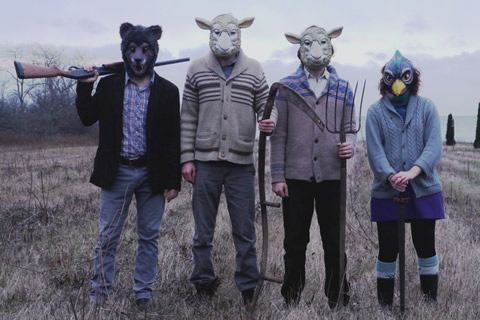It began around a campfire in the Albertan wilderness. Dak de Kerckhove, a post-doctoral fellow in ecology and evolutionary biology, and his friend Adam Phipps, a musician who used to film wildlife documentaries, were playing guitar and talking about the creatures they saw and heard every day – when they felt a creative spark. Why not combine their love of music and knowledge of wildlife by recording a concept album, in which each song would be inspired by a particular animal?
Over three years, often while living in separate cities, they pursued the project – choosing animals and sending each other suggestions for musical tracks and lyrics. While the long-distance collaboration meant that the songs progressed slowly, it also gave them time to let the concepts “marinate,” says de Kerckhove. In the end, they wrote some 20 songs together, 14 of which were released last fall on a double album entitled Predator/Prey.
Each song on the recording is named for a “term of venery” (such as “Knot of Snakes” or “Plump of Grouse”), and each song, whether it is folk, rock or electronic, draws on the sounds that animal makes – or its behaviours or environment. Guitars seem to flutter in “Piteousness of Doves,” while the sound of waves crashes through “Bed of Mussels.”
One song reflects de Kerckhove’s experience using underwater sonar to conduct research on lake life in Algonquin Park. “Between night and dawn the whole palette of the lake changes as a huge wave of organisms comes out of their hiding places to feed and then try to get away again,” he says. “It’s an interesting dynamic because while they eat, they are also in great danger. The song ‘Shoal of Fish’ was written about this chaotic ballet.”
De Kerckhove says he and Phipps were originally intrigued by the idea of writing songs “that are straightforward about the reality of life” and educational in that they were true to the “ecology of an animal.” But they wanted to be entertaining as well. “You can think about a lot of the songs and lyrics on Predator/Prey as meaningful from a human or an animal perspective,” he says. “There are similarities in our lives.”





